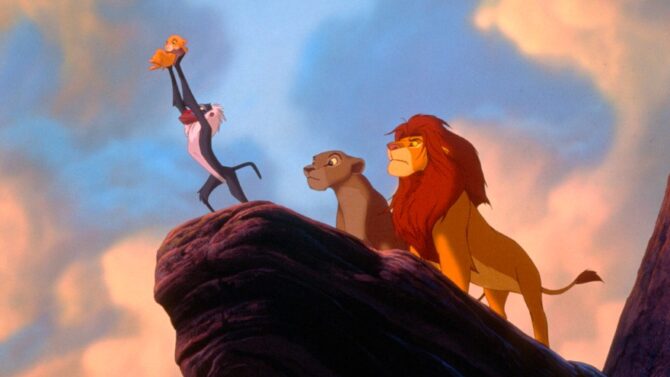Nigeria is a West African country with a diverse cultural heritage, natural landmarks, and various wildlife parks.
Blooming with recognized tourist sites and amazing waterfalls, it has diverse ecosystems, including swamps, deserts, mountains, forests, and plains.
These habitats provide an enabling environment for numerous wildlife to thrive and flourish.
Some of the amazing wildlife in Nigeria are deadly and you should avoid them as much as possible. The most dangerous animals in Nigeria include the hippopotamus, venomous snakes, mosquitoes, crocs, etc.
This article provides insights into 12 of the deadliest animals in Nigeria you should avoid, as well as safety tips for exploring wildlife in the area.
What are the Most Dangerous Animals in Nigeria?
1. Hippopotamus
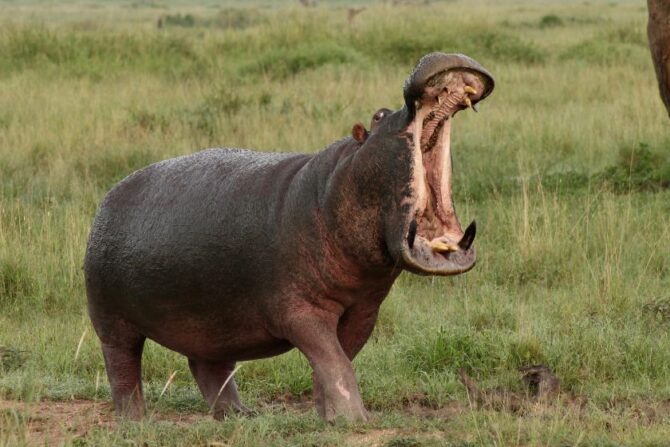
- Scientific name: Hippopotamus amphibius
- Classification: Mammal
- Habitat: Shallow water, grassy areas
- Diet: Herbivore
- Conservation status: Vulnerable
Also known as the Hippo, it is a large animal that lives on land and water.
It has a very wide mouth, a tusk, and a body weight of up to 1800kg for males and an average of 1500kg for females.
They can attain incredible speeds as much as they have bulky bodies and short legs.
Hippos are dangerous animals almost guaranteed to maul you when you get close to them.
They have a very large bite force and could crush you with their speeds; being highly territorial, they don’t condone intruders.
Hippos are known to kill many people each year in Africa.
The best way to protect yourself from being attacked by a hippo is to stay away from them as far as possible.
2. Puff Adder
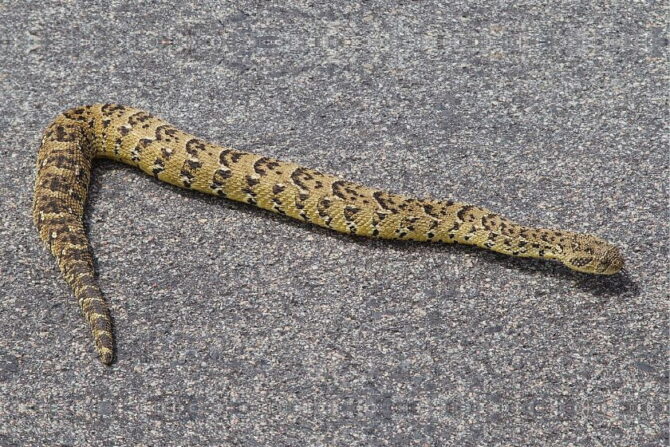
- Scientific name: Bitis arientas
- Classification: Reptile
- Habitat: Forests, grasslands, Rocky areas
- Diet: Carnivore
- Conservation status: Least concern
The puff adder can be found in many West African countries like Nigeria, Ghana, Cameroon, Togo, etc.
A puff adder’s total body weight averages 1m — they have a stout body. The females are typically smaller than the males.
This reptile has a triangular-shaped head, dorsal scales, and a color that depends on its geographic location.
A bite from the puff adder poses a great risk to life.
Unlike many venomous snake species whose venom isn’t life-threatening, a bite from this snake is something you would want to avoid in all instances.
It has a cytotoxic venom that causes intense pain, blistering and tissue damage, and ultimately death if left untreated.
Fortunately, its anti-venom is readily available.
3. West African Crocodile

- Scientific name: Crocodylus sychus
- Classification: Reptile
- Habitat: lagoons, wetlands, river basins, mangrove swamps
- Diet: Carnivore
- Conservation status: Least Concern
In 1807, Geoffroy Ettienne observed the differences between the skills of a mummified crocodile and a Nile crocodile.
He named this new specie the West African crocodiles.
However, the West African crocodile was still considered an alias of the Nile crocodile until 2003, when a study indicated the West African crocodile to be entirely different from the Nile crocodile.
The West African crocodile is dangerous, though not as aggressive as its counterpart, the Nile crocodile.
These crocodiles are responsible for many deaths each year as they are known to attack humans.
Don’t go too close to a West African crocodile; it might kill you if it gets the opportunity.
Also, don’t swim in waters infested with them as they are very territorial.
4. African Buffalo

- Scientific name: Syncerus caffer
- Classification: Mammal
- Habitat: grassland, Savannah, swamps
- Diet: Herbivore
- Conservation status: Not threatened
The African Buffalo, a large African Bovine, is not the largest buffalo species.
The largest specie is the Cape buffalo, while the smallest specie is the forest buffalo. This animal is renowned for its horns which are curved upwards.
The African Buffalo is not commonly found all over Nigeria but in some regions like the Cross River in the area bordering Cameroon.
The African Buffalo is a very dangerous animal responsible for mauling, goring, and killing many people yearly.
They are very aggressive even though they don’t look like it. These creatures are wild and can’t be domesticated.
They will encircle you, charge at you, trample you to death, or strike you with their powerful horns if they perceive you as a threat.
Curling up your body on the ground can hopefully help.
Avoid going close to a herd of African buffaloes when you sight them.
5. Nile Crocodile

- Scientific name: Crocodylus niloticus
- Classification: Reptile
- Habitat: Marshes, lakes, rivers, swamps
- Diet: Carnivore
- Conservation status: Least Concern
The Nile crocodile is a large reptile present in about 26 countries in Africa, including Nigeria, particularly in freshwater habitats.
The Nile crocodile can hardly be found in saltwater bodies, though they can thrive in such waters.
They have body lengths ranging from 2.94 – 4.4m and body weights ranging from 225 – 414.5kg.
The Nile crocodile is very aggressive. They have a powerful bite force and typically sink their sharp teeth into the flesh, making an escape almost impossible.
They usually lay motionless when basking in the sun, but do not be deceived; they are still aware of their environment.
They love to drown their victims. The Nile crocodile is bad news; avoid them as much as possible.
6. West African Carpet Viper
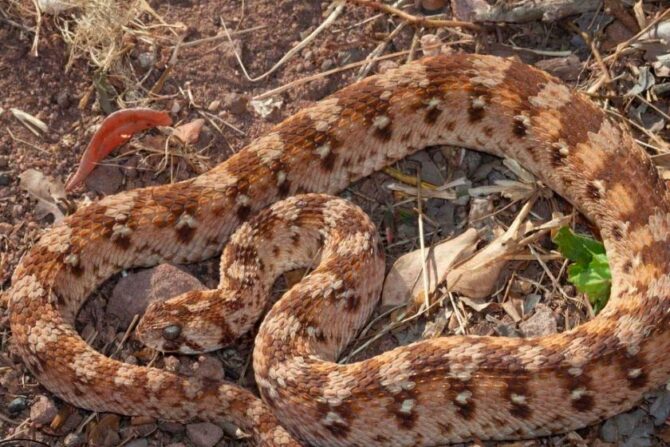
- Scientific name: Echis ocellatus
- Classification: Reptile
- Habitat: Savannah, wooded areas
- Diet: Carnivore
- Conservation status: Least Concern
The West African Carpet Viper is also called the Ocellated viper. It is a venomous viper prevalent in West Africa.
They have bulging eyes and short snouts, with body lengths ranging from 30 – 50cm.
It is a nocturnal animal that preys on vertebrates and occasionally invertebrates.
This snake species is very aggressive and responsible for many snakebites in Nigeria.
Its venom is hemotoxic, and a bite leads to shock, swelling, bleeding, and necrosis. It can also lead to amputation, blindness, and disability.
An untreated bite or the late administering of anti-venom is fatal.
A West African carpet viper bit a local named Joida Wakili in Jalingo, and he died in the hospital in Gombe due to the anti-venom arriving late.
7. Gaboon Viper

- Scientific name: Bitis gabonica
- Classification: Reptile
- Habitat: Tropical rainforests, moist regions
- Diet: Carnivores
- Conservation status: Least concern
Gaboon vipers are heavy, with lengths ranging from 4 to 6 ft. They are common in East Africa and also in West Africa.
They are good at camouflaging under dead leaves on forest floors due to their brown bodies and leaf-shaped head.
Their fangs are long, in fact, the longest fangs among snakes, measuring up to 2 inches.
They are the cause of several snake bites in Nigeria each year.
In a situation you get bitten by this creature, please seek medical services immediately before it becomes fatal.
8. Black-Necked Spitting Cobra

- Scientific name: Naja nigricollis
- Classification: Reptile
- Habitat: Rainforests, semi-deserts, Savannah
- Diet: Carnivore
- Conservation status: Least concern
The Black-Necked spitting Cobra is a spitting Cobra common to sub-Saharan Africa.
They can reach a length from 1.2 m to 2.2m, with varying colorations and markings.
Like other spitting cobras, they eject venom from their fangs when threatened, although fatalities from untreated bites are low.
The venom of this snake specie is neurotoxic and causes skin irritation, inflammation, and blisters.
The venom can also cause permanent blindness if it makes eye contact and is not washed off.
The black-necked spitting Cobra accounts for a lot of snake bites in the West African country.
Victims were mostly farmers or headers. People have been bitten too when they rolled upon it in their sleep.
9. African Elephant
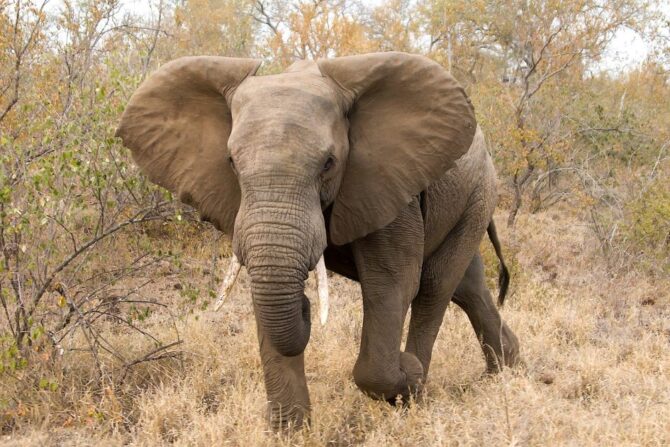
- Scientific name: Loxodonta
- Classification: Mammal
- Habitat: Sahelian scrubland, tropical rainforests, arid regions
- Diet: Herbivore
- Conservation: Endangered
The African Elephant is a large graceful mammal with grey skin and a trunk.
The size and color of its tusk depend on the species. The same goes for the size and shape of its ears and skull.
There are two recognized sub-species of this animal. You can find this animal in Ogun, Edo, Cross rivers, and Ondo states in Nigeria.
While the males are known to be aggressive during mating, the females are very aggressive in protecting their young.
They can trample perceived threats or intruders. Standing between a mother elephant and her calf is a recipe for disaster, as an attack can lead to death.
In Ogun state, elephants invaded farmlands and attacked villagers as they felt their natural habitat was being encroached on.
10. Black Mamba
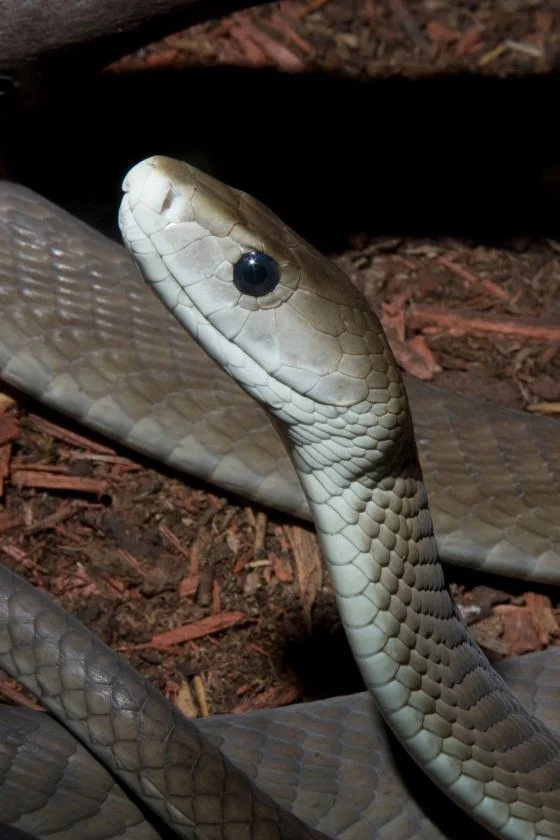
- Scientific name: Dendroaspis polylepis
- Classification: Reptile
- Habitat: Tree hollows, savannah, shrubs
- Diet: Carnivore
- Conservation status: Least Concern
The black mamba, a venomous snake, has an average body length of 4.5m.
Though it is called the black mamba, it is not black; instead, it is green but with a very dark inky mouth.
This snake specie is fast and capable of attaining a speed of 20km/h.
For good reasons, it is highly feared. It is very aggressive and will not contemplate twice before striking when cornered; it will surely strike.
It can deliver very fast strikes, delivering enough neurotoxic and cardiotoxic venom that can kill humans within an hour.
11. Mosquito

- Scientific name: Culicidae
- Classification: Insect
- Habitat: Forest, mashes, tall grass
- Diet: Parasite
- Conservation: Least concern
Mosquitoes are small insects and don’t look intimidating, but they are very deadly.
In Africa, they are the deadliest animals.
These insects with segmented bodies, a pair of wings, and an elongated sharp mouth give annoying and itchy bites.
Their buzzes, too, right in the ears, are quite discomforting.
Mosquitoes are dangerous, being the cause of lots of human deaths annually.
They infect people with malaria, yellow fever, Dengue fever, and Zika.
In 2021, WHO records show that malaria killed 200,000 Nigerians and infected 61 million others — a stunning 31.9 percent of the global malaria deaths that year.
12. Bee

- Scientific name: Anthophila
- Classification: Insect
- Habitat: Gardens, woodlands, orchards
- Diet: Herbivore
- Conservation status: Least Concern
Bees are renowned for producing honey and for their role in pollination.
They are related to the ant and wasps; they live in colonies, though few species like the leaf-cutter bee, sweat bee, mason bee, and carpenter bee are solitary.
Bees get their protein and energy by feeding on pollen and nectar.
Bees have stingers with which they inflict horrible stings.
When a bee stings, it dies because its stinger is detached from its body.
They are very overprotective of their hive. Stings from bees cause anaphylactic attacks, which can be fatal.
Be careful when passing by a bee hive. Bees can chase intruders over long distances.
Nigeria Wildlife Safety Tips
Exploring the wildlife in Nigeria has rules and regulations you should strictly adhere to for your safety.
Ensure you follow these do’s and don’ts. They include:
- Be cautious of where you swim: Do not just swim in any water you see. Crocodiles are apex predators and could hide perfectly underwater, waiting for prey to get into the water. Swim only in waters that are certified safe.
- Steer clear of the hippos: Hippos are guaranteed to give you a chase if they encounter you. These animals are very deadly with powerful biting forces. Steer clear of them.
- Do not attempt to kill snakes that aren’t attacking you: Snakes like the black mamba are so fast that they can strike you multiple times before you notice. If they seek to escape, let them be. Don’t stop them.
- Mosquitoes are dangerous in Africa: Carry your insecticide and always fumigate wherever you intend to sleep to avoid getting infected with malaria.
- Do not touch what you don’t know: Some plants are known to yield a painful sensation when touched. Avoid what you don’t know. The same goes with animals; if you see an adorable creature, you don’t know, back away.
- Always walk through clearly mapped-out paths: Do not deviate and go through unmapped paths, bushes or shrubs; dangerous reptiles and arachnids might just be lurking behind. Protect yourself and do the right thing.
Frequently Asked Questions
Are there tigers in Nigeria?
Unfortunately, there are no tigers in Nigeria or Africa as a whole. There have been so many speculations on why tigers are not in Africa, but all speculations and theories have not been proven.
Does Nigeria have any alligators?
Neither Nigeria nor Africa as a whole has any alligators. Although, people have reported sightings or even killing an alligator when in fact, what they saw or killed was a Nile crocodile.
Are there any lions in Nigeria?
Yes, lions can be found in Nigeria. However, they can only be found in Yankari game reserve, Bauchi, and Kainji national park, Niger, where they are known to survive.
What animal is considered the most dangerous in Nigeria?
The most dangerous animal in Nigeria is the puff adder, known to have caused more death than any other snake in the country because of its ability to blend with its surroundings.
Conclusion
Exploring the wildlife in Nigeria is lovely and satisfying, but only when you understand the behavior of the animals.
These most dangerous animals in Nigeria aren’t evil; they have roles to play in ecological balance.
However, they might easily misinterpret your intention. Therefore, try to keep your distance from these creatures as much as possible.
Next Up…
Discover the Most Dangerous Animals in Africa:

